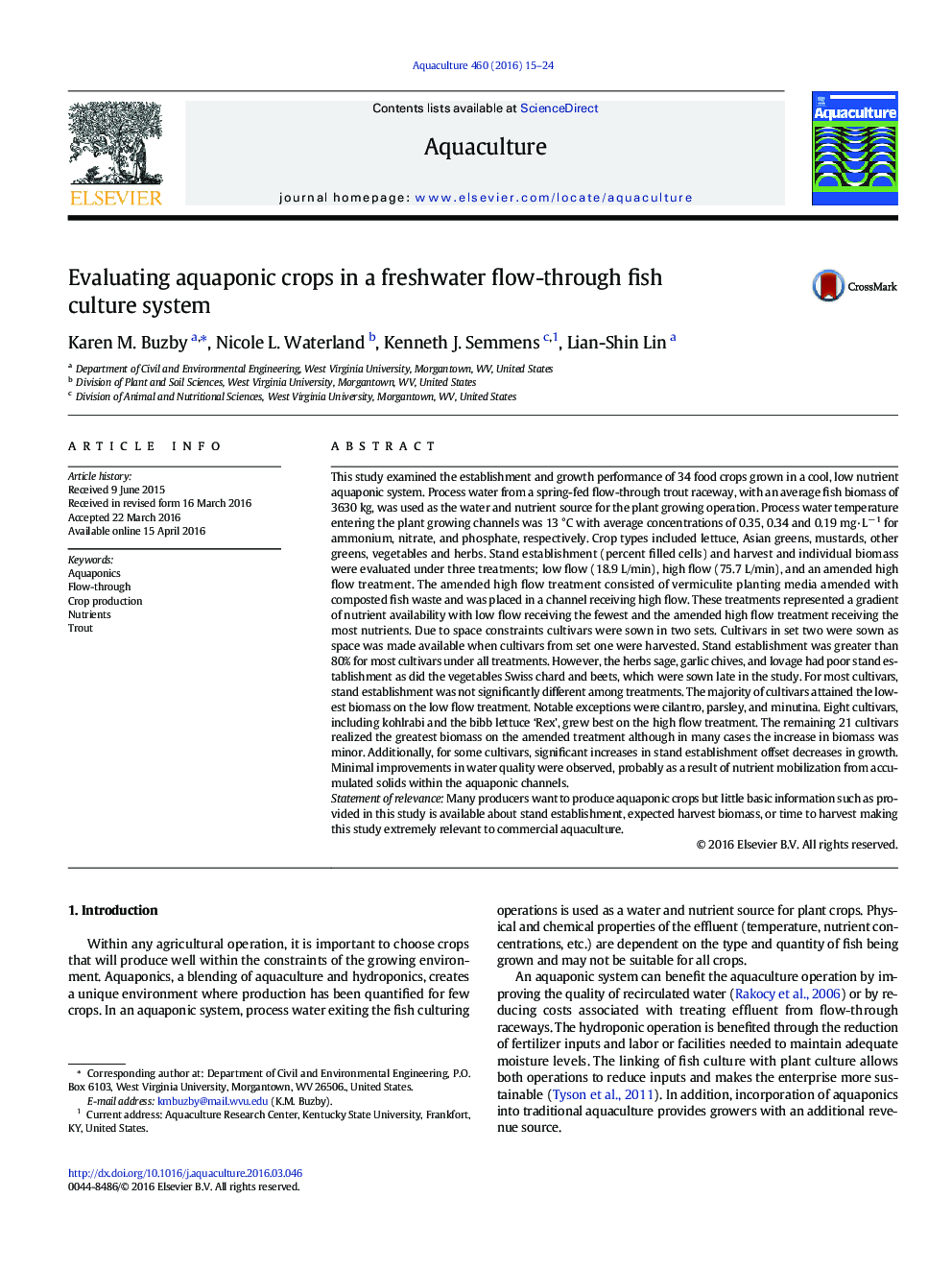| کد مقاله | کد نشریه | سال انتشار | مقاله انگلیسی | نسخه تمام متن |
|---|---|---|---|---|
| 2421400 | 1552827 | 2016 | 10 صفحه PDF | دانلود رایگان |
• With the exception of oregano and rosemary, cultivars grew well within the low temperature, low nutrient aquaponic system.
• For most cultivars, stand establishment was greater than 80% and was not significantly different among treatments.
• Most cultivars grew best on the amended treatment, but some grew best on the low flow treatment with the fewest nutrients.
• Growth performance of different cultivars of the same crop varied indicating the need to do site-specific growth trials
This study examined the establishment and growth performance of 34 food crops grown in a cool, low nutrient aquaponic system. Process water from a spring-fed flow-through trout raceway, with an average fish biomass of 3630 kg, was used as the water and nutrient source for the plant growing operation. Process water temperature entering the plant growing channels was 13 °C with average concentrations of 0.35, 0.34 and 0.19 mg·L− 1 for ammonium, nitrate, and phosphate, respectively. Crop types included lettuce, Asian greens, mustards, other greens, vegetables and herbs. Stand establishment (percent filled cells) and harvest and individual biomass were evaluated under three treatments; low flow (18.9 L/min), high flow (75.7 L/min), and an amended high flow treatment. The amended high flow treatment consisted of vermiculite planting media amended with composted fish waste and was placed in a channel receiving high flow. These treatments represented a gradient of nutrient availability with low flow receiving the fewest and the amended high flow treatment receiving the most nutrients. Due to space constraints cultivars were sown in two sets. Cultivars in set two were sown as space was made available when cultivars from set one were harvested. Stand establishment was greater than 80% for most cultivars under all treatments. However, the herbs sage, garlic chives, and lovage had poor stand establishment as did the vegetables Swiss chard and beets, which were sown late in the study. For most cultivars, stand establishment was not significantly different among treatments. The majority of cultivars attained the lowest biomass on the low flow treatment. Notable exceptions were cilantro, parsley, and minutina. Eight cultivars, including kohlrabi and the bibb lettuce ‘Rex’, grew best on the high flow treatment. The remaining 21 cultivars realized the greatest biomass on the amended treatment although in many cases the increase in biomass was minor. Additionally, for some cultivars, significant increases in stand establishment offset decreases in growth. Minimal improvements in water quality were observed, probably as a result of nutrient mobilization from accumulated solids within the aquaponic channels.Statement of relevanceMany producers want to produce aquaponic crops but little basic information such as provided in this study is available about stand establishment, expected harvest biomass, or time to harvest making this study extremely relevant to commercial aquaculture.
Journal: Aquaculture - Volume 460, 1 July 2016, Pages 15–24
